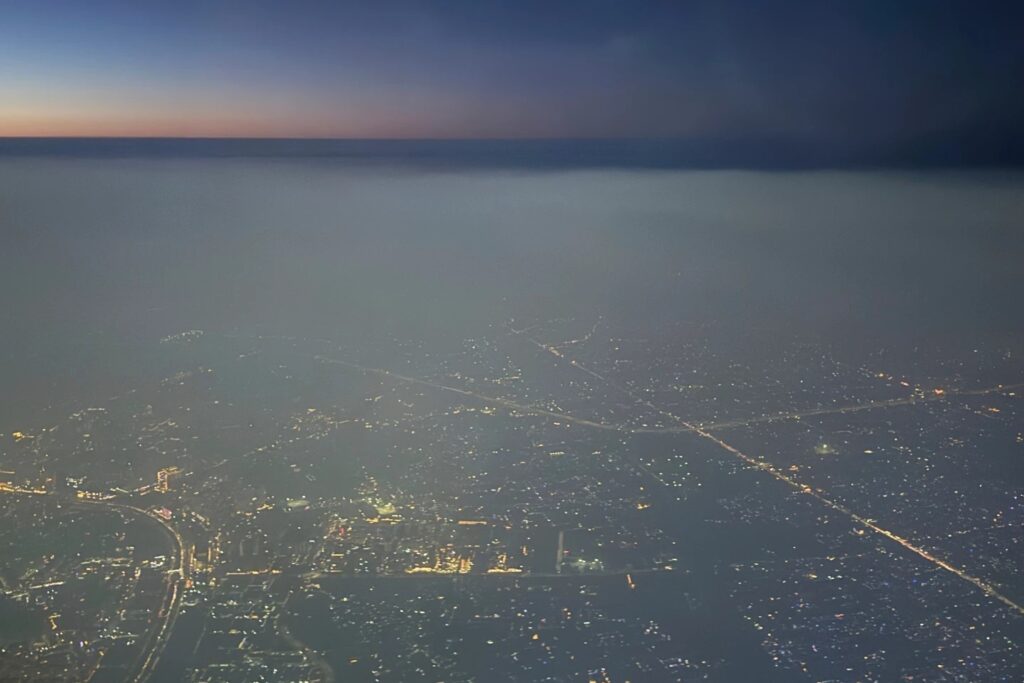As India battles hazardous air pollution, scientists are turning to cloud seeding — using aircraft to disperse chemicals that trigger artificial rain — to wash pollutants from the sky. While the science offers hope, experts caution that success depends on the right clouds, moisture, and timing. Trials in Delhi show mixed results, suggesting cloud seeding may provide only short-term relief, not a lasting solution to the country’s deepening air-quality crisis.

PHOTO: AP
By Newswriters News Desk
As India’s air quality worsens and rainfall patterns grow erratic, “cloud seeding” — a technique to artificially induce rain — has once again entered public discussion. From the smog-filled skies of Delhi to drought-hit regions of Maharashtra, policymakers and scientists are exploring whether humans can coax clouds into giving up their moisture. But while the idea is not new, its success remains mixed and highly dependent on weather conditions and scientific precision.
Cloud seeding involves dispersing tiny particles — usually silver iodide, potassium iodide, or dry ice — into clouds using aircraft, rockets, or drones. These particles act as condensation nuclei around which water droplets can form and grow heavy enough to fall as rain. The method, first tested in the 1940s, has since been used in over 50 countries, from the United States and China to the United Arab Emirates and Israel.
India has experimented with cloud seeding since the 1980s. States such as Maharashtra, Karnataka, and Tamil Nadu have carried out several projects, mostly during drought years. In 2018, Karnataka conducted one of the largest operations under “Project Varshadhare,” while Maharashtra partnered with the Indian Institute of Tropical Meteorology (IITM) and the Indian Space Research Organisation (ISRO) to study its impact. The results, however, have often been inconclusive.
Scientists emphasize that cloud seeding does not create rain clouds — it can only enhance precipitation if suitable clouds already exist. “It’s not a magic wand. The atmosphere must have enough moisture and the right type of clouds,” says Dr. Gufran Beig, a senior atmospheric scientist. “At best, seeding can increase rainfall by 10–20 percent, but even that is uncertain.”
Globally, cloud seeding has been used for diverse purposes — from boosting water supplies in arid regions to clearing smog before major events, such as the 2008 Beijing Olympics. China continues to invest heavily in weather modification, spending billions of dollars on nationwide programs. The United Arab Emirates has also reported positive outcomes from its ongoing seeding efforts, though independent verification is limited.
In India, the renewed interest in artificial rain stems not just from water scarcity but also from the growing pollution crisis. Delhi authorities, for instance, have discussed using cloud seeding to wash away pollutants during severe smog episodes. But experts caution that its effectiveness against pollution is questionable. “Rain can temporarily reduce particulate matter, but it doesn’t address the source of pollution,” notes a report from IITM.
Moreover, cloud seeding raises environmental and ethical concerns. Questions persist about the long-term effects of silver iodide on ecosystems, cross-border weather manipulation, and the diversion of natural rainfall patterns.
Despite these uncertainties, advances in radar technology, weather modeling, and drone deployment are improving the precision of cloud seeding experiments. The Indian Meteorological Department (IMD) and IITM continue to study the science behind these efforts, hoping to make future interventions more reliable.
For now, cloud seeding remains a fascinating blend of science and hope — a reminder that while humans can influence nature, mastering it is another challenge altogether.



